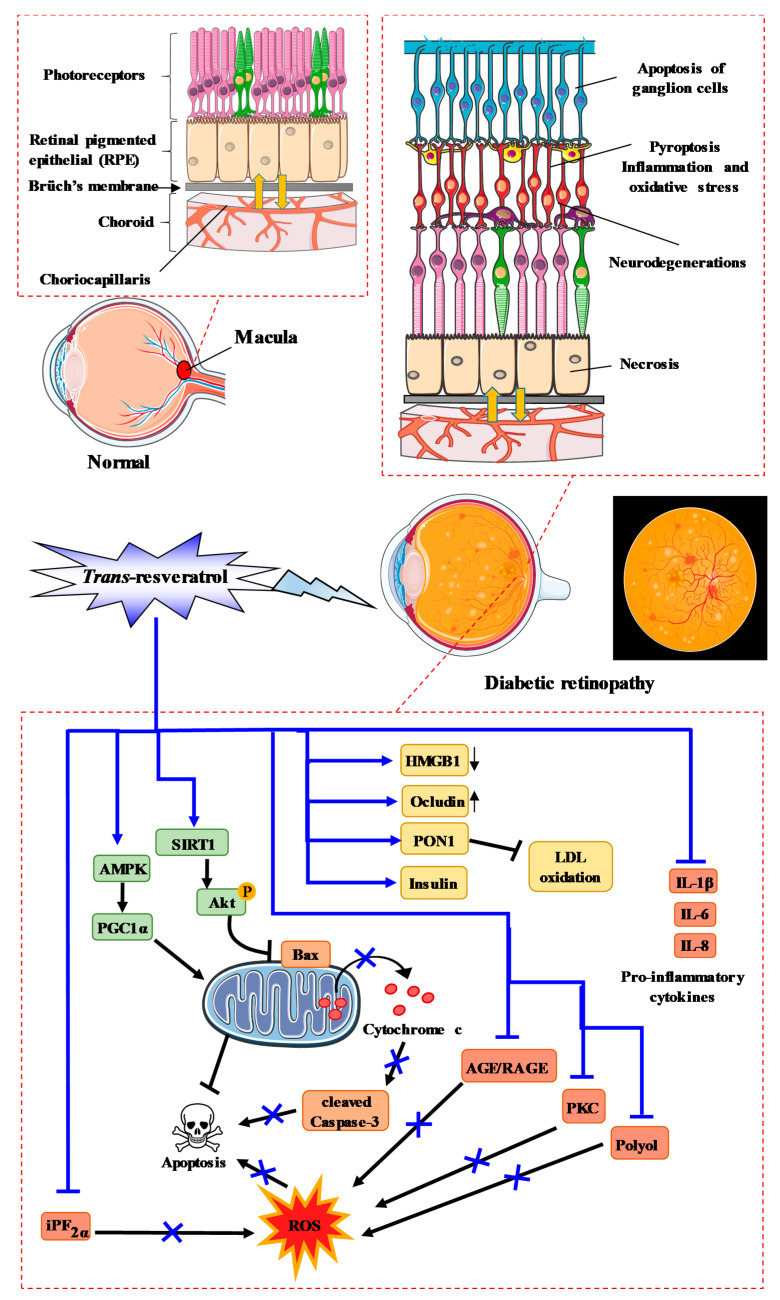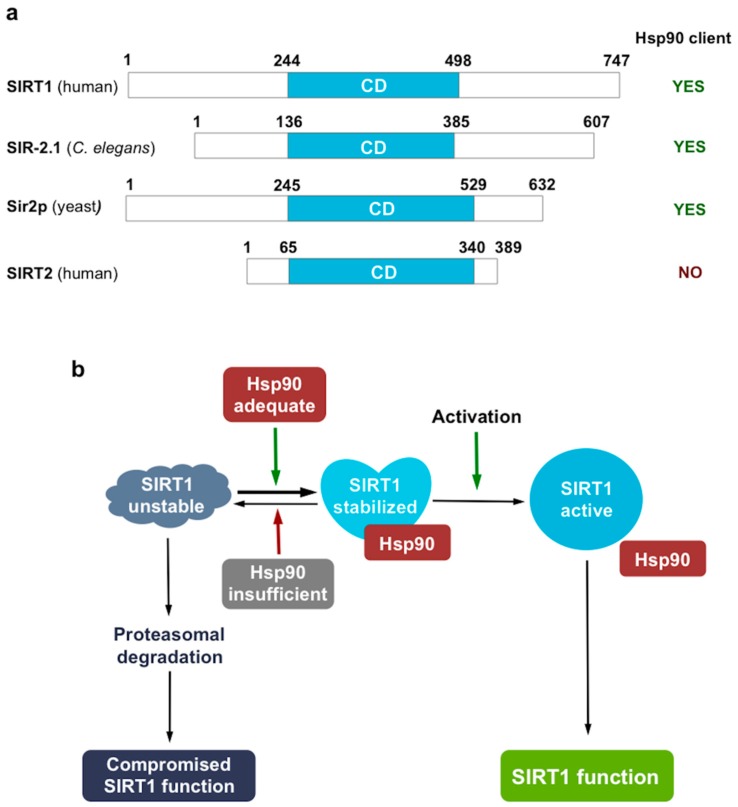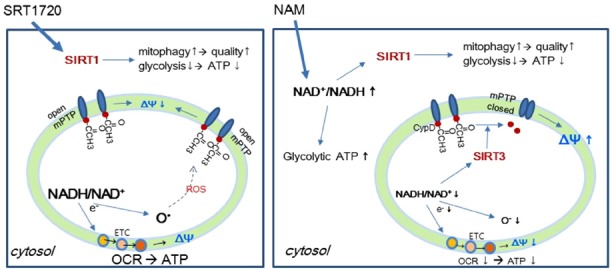SIRT1 Target Analysis Report Summary


About the Target
Based on the provided context information and the query, it can be summarized that SIRT1 (also known as sirtuin-1) plays a crucial role in various biological processes and has potential therapeutic relevance.
SIRT1 activation:
- SIRT1 is activated by resveratrol (RSV) and plays a role in reducing retinal neurodegeneration, apoptosis, and inflammation in diabetic retinopathy [1].
- RSV stimulates mitochondrial activity through the AMPK-PGC1alpha pathway, which reduces apoptosis [1].
- SIRT1 activation by RSV inhibits the MAP kinase pathway and reduces oxidative-osmotic nitrosative stress, contributing to the pathophysiology of diabetic cataract [1].
Therapeutic strategies:
- Increasing SIRT1 activity is a potential therapeutic approach, and various pharmacologic and non-pharmacologic interventions are being explored [2].
Tumor-related effects:
- SIRT1 has both tumor suppressing and tumor promoting activities [3].
- It can influence the development of tumors by deacetylating specific transcription targets, such as tumor suppressor genes (p53, HIC1, Rb) or tumor-promoting genes (Ras, Myc) [3].
Vascular endothelial function and preeclampsia:
- Downstream targets of SIRT1 are related to vascular endothelial function and pathways implicated in the pathophysiology of preeclampsia (PE) [4].
- Functional enrichment analysis revealed pathways associated with the pathophysiology of PE, and SIRT1 plays a role in regulating these pathways [4].
Hepatic steatosis and inflammation:
- SIRT1 is involved in the regulation of hepatic steatosis and inflammation [5].
- DHA (docosahexaenoic acid) treatment increases the expression of SIRT1 and inhibits NF-kappaB activation, leading to reduced inflammation and improved hepatic steatosis [5].
The provided context information highlights various roles and implications of SIRT1 in different biological processes, including retinopathy, tumor development, vascular endothelial function, preeclampsia, and hepatic steatosis. SIRT1 activation and modulation may have therapeutic relevance in these areas. [1][2][3][4][5]
Based on the provided context information, several key genes, such as SIRT1, are differentially expressed in female and male magpies, with SIRT1 being upregulated in males [6]. SIRT1 is known for its role in stress resistance and longevity [6]. Additionally, SIRT1 is associated with AMPK signaling and energy metabolism, with females enhancing AMPK and G6Pase to regulate energy metabolism [6]. In terms of the immune system, females upregulate MHC II, JNK, and SMADs to promote the differentiation of Th1/Th2 and Th17 cells, while males inhibit the differentiation of Th17 cells through Th1 cells [6]. Moreover, genes encoding JNK and SIRT1 are significantly enriched in the FOXO signaling pathway, which is related to oxidative stress resistance, longevity, apoptosis, cell-cycle control, and glucose metabolism [6]. In another study, SIRT1 expression was enhanced via NRF2-mediated p53 suppression, leading to the maintenance and regulation of MSC stemness [7]. Furthermore, SIRT1 interacts with HDAC4 to facilitate SUMOylation of a specific lysine residue [8]. The stabilization of SIRT1 by Hsp90 is proposed to involve regions beyond its catalytic core, and reduction in Hsp90 capacity can induce SIRT1 destabilization and degradation [9]. Finally, the effects of NAM and SRT1720 on SIRT1 activation and cellular processes were compared, with SRT1720 leading to upregulation of mitophagy and mitochondrial turnover, while NAM enhanced glycolysis and decreased electron transfer to Complex I [10].
Figure [1]

Figure [2]

Figure [3]

Figure [4]

Figure [5]

Figure [6]

Figure [7]

Figure [8]

Figure [9]

Figure [10]

Note: If you are interested in the full version of this target analysis report, or if you'd like to learn how our AI-powered BDE-Chem can design therapeutic molecules to interact with the SIRT1 target at a cost 90% lower than traditional approaches, please feel free to contact us at BD@silexon.ai.
More Common Targets
ABCB1 | ABCG2 | ACE2 | AHR | AKT1 | ALK | AR | ATM | BAX | BCL2 | BCL2L1 | BECN1 | BRAF | BRCA1 | CAMP | CASP3 | CASP9 | CCL5 | CCND1 | CD274 | CD4 | CD8A | CDH1 | CDKN1A | CDKN2A | CREB1 | CXCL8 | CXCR4 | DNMT1 | EGF | EGFR | EP300 | ERBB2 | EREG | ESR1 | EZH2 | FN1 | FOXO3 | HDAC9 | HGF | HMGB1 | HSP90AA1 | HSPA4 | HSPA5 | IDO1 | IFNA1 | IGF1 | IGF1R | IL17A | IL6 | INS | JUN | KRAS | MAPK1 | MAPK14 | MAPK3 | MAPK8 | MAPT | MCL1 | MDM2 | MET | MMP9 | MTOR | MYC | NFE2L2 | NLRP3 | NOTCH1 | PARP1 | PCNA | PDCD1 | PLK1 | PRKAA1 | PRKAA2 | PTEN | PTGS2 | PTK2 | RELA | SIRT1 | SLTM | SMAD4 | SOD1 | SQSTM1 | SRC | STAT1 | STAT3 | STAT5A | TAK1 | TERT | TLR4 | TNF | TP53 | TXN | VEGFA | YAP1

